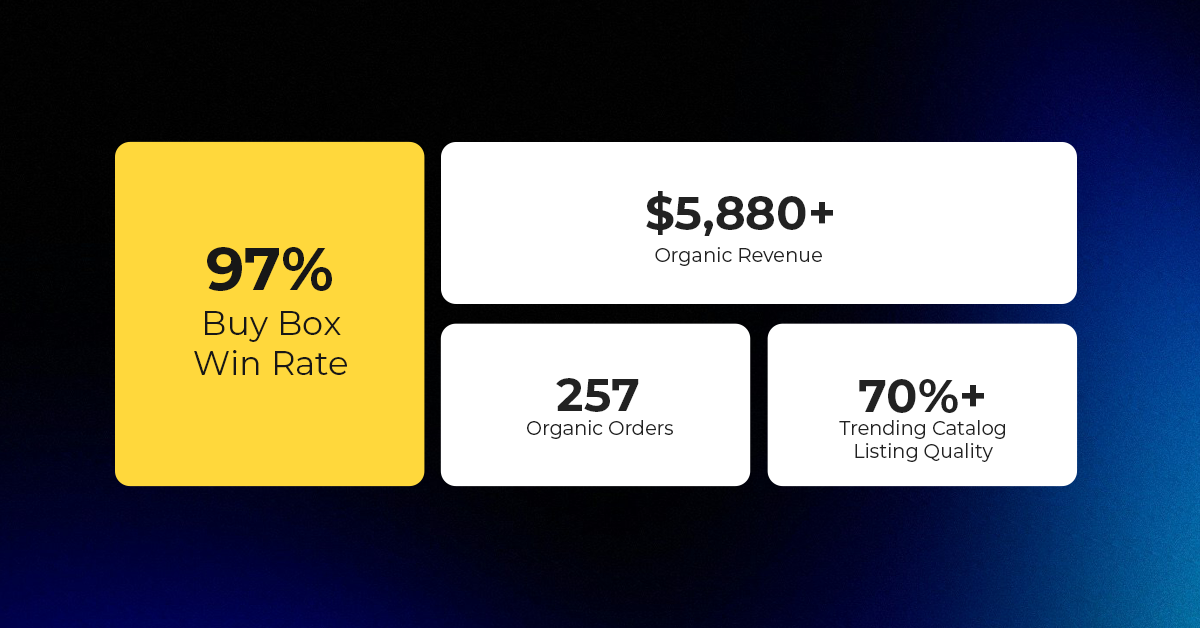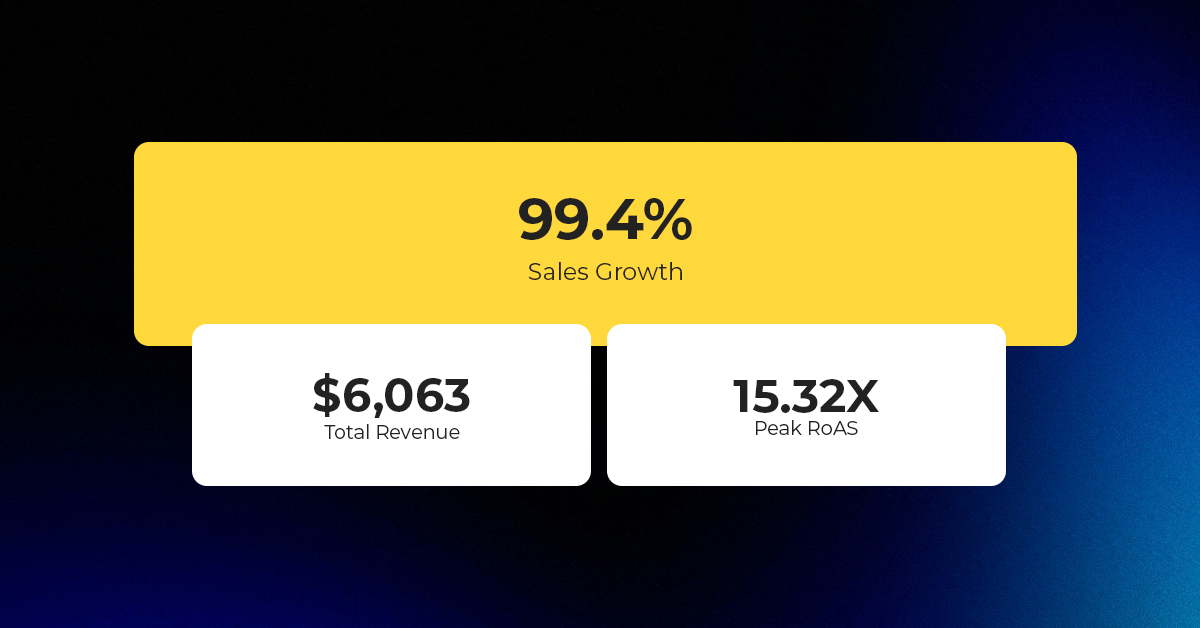Centralized Catalog, Faster Publishing: 40ParkLane’s Marketplace Success with CedCommerce
Reading Time: 4 minutesAbout the Brand: 40ParkLane LLC Studio40ParkLane is a design-led print-on-demand brand created…
Online sales on this Thanksgiving-Black Friday-Cyber Monday shop-a-thon were of epic proportion. People shopped online in unprecedented numbers, and sellers who had online presence were clear winners. The impact of the weekend sales has been so profound that it has made Walmart to speed up its expansion of online infrastructure.
Now that the Christmas and Boxing Day are just around the corner; with better and diverse deals on the day after the Christmas, consumers are relishing, again, to go after products still unticked in their checklists. Therefore, the sellers not been able to exploit the benefits of the festive jackpot, your time comes now. Prepare for the biggest online bonanza of the year.
Although, shoppers will be the biggest winners from these deals, but you, too, are a winner, and it’s Your Responsibility to get prepare before the shopping carnival reaches its epitome. Losing out again is neither a good idea nor a good choice.
Therefore, CedCommerce is back again with PRE – CHRISTMAS DISCOUNT deals for online sellers. Get benefited from the discounted price.
ALL THE CEDCOMMERCE PRODUCTS ARE AVAILABLE WITH 10% CHRISTMAS DISCOUNT. To Avail Discount, Use Coupon Code CHRISTMAS10.
Among the latest entrants in the Cedcommerce Family is the online auction system. Developed for Magento 2 stores, this could be truly instrumental in your success this Christmas. Online sellers can easily exploit the benefits of this product, especially those in the gift industry. Organize your auction, and make it more interesting with fascinating features of Online Auction System.
The name says it all. Isn’t that you really want – rewarding your Customers. Along with the exciting offers and deals, reward them with points too. It’s a great customer retention tool, and you definitely want them to visit you again after the Christmas. So, why lose the opportunity?! It is the other latest entrant in CEDCOMMERCE family of products.
Before shop-a-thon commences, you would like to ensure maximum visibility for your products, so they are not lost in the crowd of deals. This is exactly what Jet Integration extension does. It helps you sell your products on Jet.com – the fastest growing e-commerce platform. The extension is available for 13+ frameworks and has been a viral among the online sellers across the length and breadth of USA.
WALMART INTEGRATION EXTENSION:
Similar to Jet Integration extension, it helps you ensure a place for your products on Walmart.com as well. The extension is available for frameworks such as Magento 1 & 2, Woocommerce, Bigcommerce, Volusion, Prestashop, BigCommerce and Shopify etc. Launched recently, it is grabbing the eye- balls rapidly. So, maximize the visibility of your products.
AVAIL FLAT 10% ON EVERY PRODUCT. USE COUPON CODE “CHRISTMAS10” TO AVAIL THE DISCOUNTS. THE OFFER IS VALID FROM DECEMBER 17 to DECEMBER 25.
NEWEGG WOOCOMMERCE INTEGRATION EXTENSION:
Be it Black Friday, Thank’s Giving, Cyber Monday or BOXING DAY, the gadget freaks can’t have enough. It’s always more for them! And for you, it’s the opportunity you would definitely relish. This what NewEgg-WooCommerce integration extension does. It lets you sell your Woocommerce Store gadgets on the leading electronic appliances marketplace.
And if you’re Canadian and looking for a robust shipping solution, then CANADA Post shipping is for you. It lets you ship your store products to almost to the entire world. So, if your buyers want to gift their near and dear ones residing across the different corners of the world, they are not left behind. It’s available both for Magento 1 and Magento 2 Stores.
TWILIO SMS INTEGRATION EXTENSION:
Keeping your buyers in the loop while their products are on the way or informing them about the latest happenings, deals or events, both the features are the mark of responsible business. Now, you too can inform them when are they going to receive their much awaited Christmas gifts or what is awaiting them! It’s available for Magento 2 stores.
Although these products are not directly related to Christmas benefits but highly effective. Take a look:
MAGENTO MULTIVENDOR MARKETPLACE EXTENSION (PLATINUM):
The best product of Cedcommerce. If opening up your multi-vendor marketplace is your near future plan, then you are its ideal customer. Let others like you join the bandwagon and sell collectively. Based on Shared economy concept, this extremely customizable and affordable extension lets you take a time leap in your efforts. Boutique, renting, Food-tech, Fin-tech whatever may be your future marketplace concept, it fulfills all the requirements. It’s available for Magento 1 and 2; both.
If you’re a blogger or business unit heavily dependent on content, it’s for you. WP advanced PDF pro enables your visitors to convert your blogs and important information into PDF at will. Imagine your information would be with them even when they don’t have the access to internet.
WOOCOMMERCE WHOLESALE MARKET EXTENSION
For those WooCommerce store owners who have abundant access to the particular product(s), becoming a whole seller is a great idea. And this what this extension is made for – managing the wholesale customers and general customers from the same store. What’s more exciting is this extension comes for free. Only two addons have to be bought.
And yeah, with our products, you’re purchasing our commitment for the everlasting uber-cool support. Make your move now and best prepare yourself for Christmas.
Merry Christmas & Prosperous New Year!
Team CedCommerce

Reading Time: 4 minutesAbout the Brand: 40ParkLane LLC Studio40ParkLane is a design-led print-on-demand brand created…

Reading Time: 3 minutesAbout the Company Brand Name: David Protein Industry: Health & Nutrition (Protein…

Reading Time: 3 minutesOnline retail spending in Germany is entering a renewed growth phase after…

Reading Time: 4 minutesTikTok Shop has released a comprehensive Beauty and Personal Care Products Policy,…

Reading Time: 4 minutesTikTok Shop has formally outlined comprehensive requirements for expiration date labeling and…

Reading Time: 3 minutesTikTok Shop is raising its sales commission for merchants across five active…

Reading Time: 11 minutesBy now you have seen your BFCM 2025 numbers. The harder question…

Reading Time: 3 minutesAbout the Brand Name: Vanity Slabs Inc Industry: Trading Slabs- Vanity Slabs…

Reading Time: 2 minutesAbout the Brand Name: Ramjet.com Industry: Automotive Parts & Accessories Location: United…

Reading Time: 2 minutesAmazon is rolling out strategic referral fee reductions across five major European…

Reading Time: 4 minutesQuick Summary: Scaling Lifestyle Powersports on eBay with CedCommerce Challenge: Zero marketplace…

Reading Time: 4 minutesTikTok has surpassed 460 million users across Southeast Asia, reinforcing its position…

Reading Time: 3 minuteseBay has released its final seller news update for 2025, with a…

Reading Time: 3 minutesAmazon has clarified its stance regarding speculation around a potential breakup between…

Reading Time: 4 minutesWalmart is accelerating its push into next-generation fulfillment by expanding its drone…

Reading Time: 4 minutesFaire, the fast-growing wholesale marketplace connecting independent retailers with emerging brands, has…

Reading Time: 4 minutesB2B buying in the United States is undergoing a fundamental behavioral shift…

Reading Time: 3 minutesSummary Cyber Monday 2025 has officially become the largest online shopping day…

Reading Time: 2 minutesSummary Amazon kicked off December with two major developments shaping the future…

Reading Time: 2 minutesSummary Walmart has entered December with two major moves that signal a…